Verizon 4G LTE: Two Datacards and a WiFi Hotspot Massively Reviewed
by Brian Klug on April 27, 2011 12:11 AM EST- Posted in
- Smartphones
- Samsung
- Verizon
- LTE
- 4G
- Pantech UML290
- USB551L
- Mobile
- MDM9600
Verizon USB551L
The second card we tested is a much newer arrival, the Verizon USB551L, made by Novatel Wireless. The USB551L is the first of Verizon’s LTE data cards to come with support for OS X out of the box (though the Pantech UML290 and LG card now also do so with a firmware update), and it displays that support proudly on the box. More on this in a second.
THe USB551L is considerably lighter and cheaper feeling than the UML290. Something about the whole device simply just lends it a less durable feeling.
There’s a simple plastic cover over the SIM card slot.
Unlike most devices, the USB551L holds the SIM in with a plastic clip, and requires a small stick to eject it—you press the plastic part down, then slide it out. It’s definitely the first time I’ve seen this mechanism used to hold a SIM in place.
The USB connector rotates out and seems to be held at a particular location using some spring loaded mechanism. It’s a half height USB connector that has exposed gold contacts without the full surrounding USB plug.
Considering that most of the time it’s shielded in the closed position, that’s not a big deal. The problem with this construction is that there’s some other mechanism pressing against a metal contact on the connector which rotates. If you push the data card back far enough, it’ll lose the data connection entirely when the mechanism stops pressing against metal. It also always wants to sit at one orientation due to the spring loading.
If your notebook has USB ports on the back, pushing the laptop display back too far could rotate the card far enough to cause disconnect. It’s a potentially frustrating configuration. I ran into this when testing on my uber-old Inspiron 8500, for example.
On one side of the USB551L is an external antenna jack hidden under a rubber plug. This is most likely cellular only since the USB551L advertises no GPS support unlike the Pantech.
The majority of the USB551L is a black soft touch material, though the top and bottom are slippery glossy plastic. There’s a small vertical window to the right of the Verizon logo where the status LEDs are. Blue indicates LTE, green indicates EVDO, and blinking of either indicates activity.
Side by side, the USB551L and UML290 are roughly the same outline, though the UML290 is thicker and feels more dense. Both also come with appropriate USB extension cables.
I opened the USB551L after I was done with testing to investigate how it manages connectivity with a simpler, smaller package.
The USB551L seems to be held together using some one-way plastic tabs and adhesive. I pried it open no problem and got it back together as well, but it’s just a bit more challenging. Inside, you can see one antenna runs along the length of the device, the other is orthogonal and up at the top.
The one that runs the length of the device is held in contact with a pogo pin, the other with a gold pad.
The EMI cans on the USB551L pop on and off easily, allowing us an awesome opportunity to grab a shot of the MDM9600 running the show. You can also easily see its adjacent NAND, though I couldn’t make out any of the markings.
That USB connector situation is more visible now as well. I’m not entirely sure what’s going on here, but you can see two pads on both sides and a metal strip that clearly runs across the USB connector. Again this flip open system is spring loaded and likes to sit in one position. More pics in the gallery below:


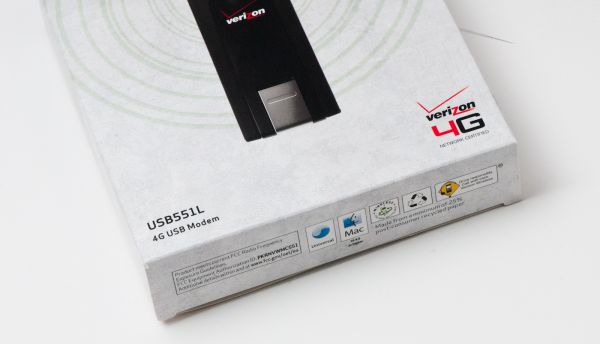
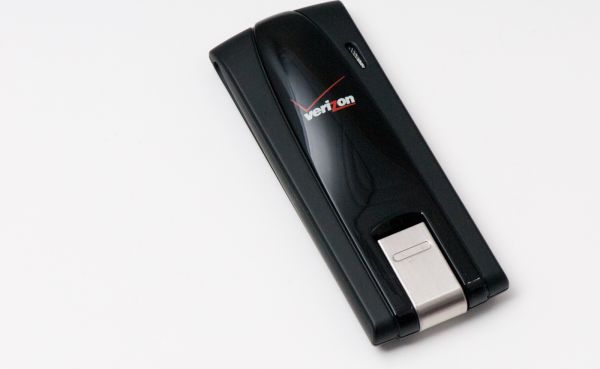
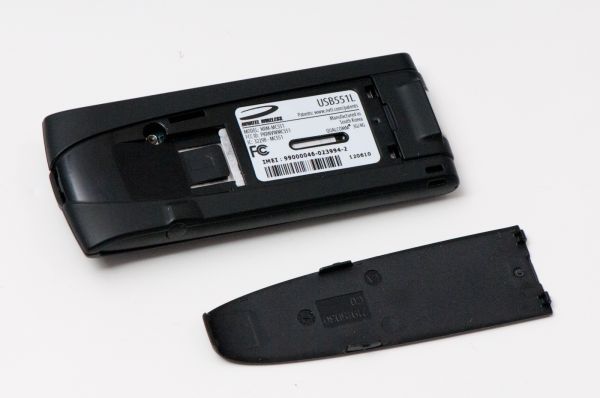

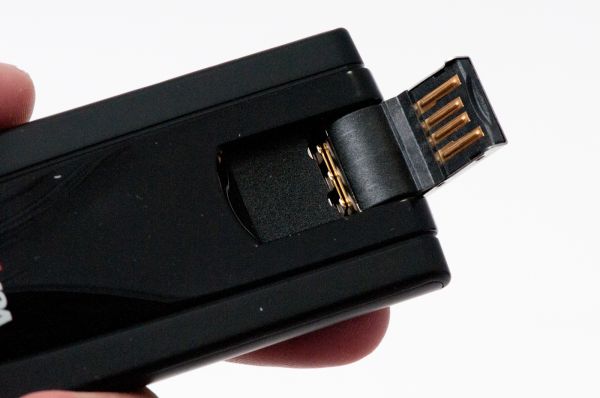
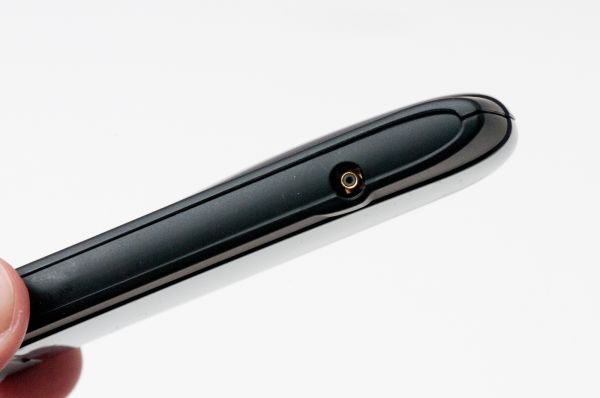
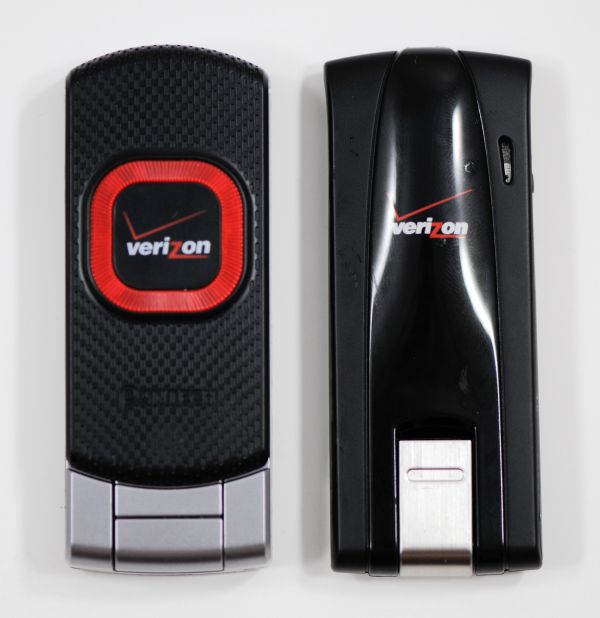
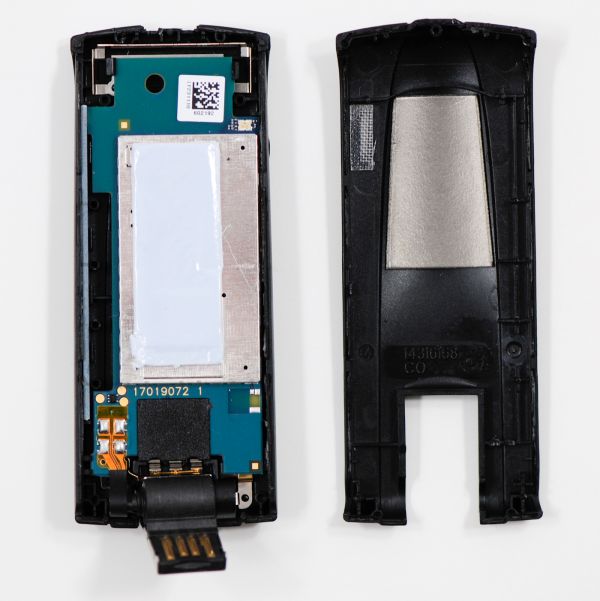
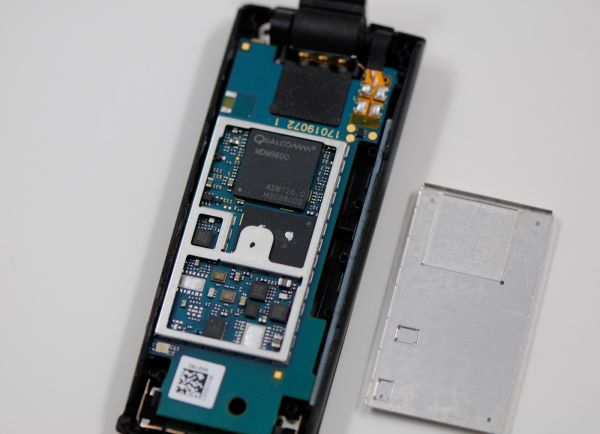
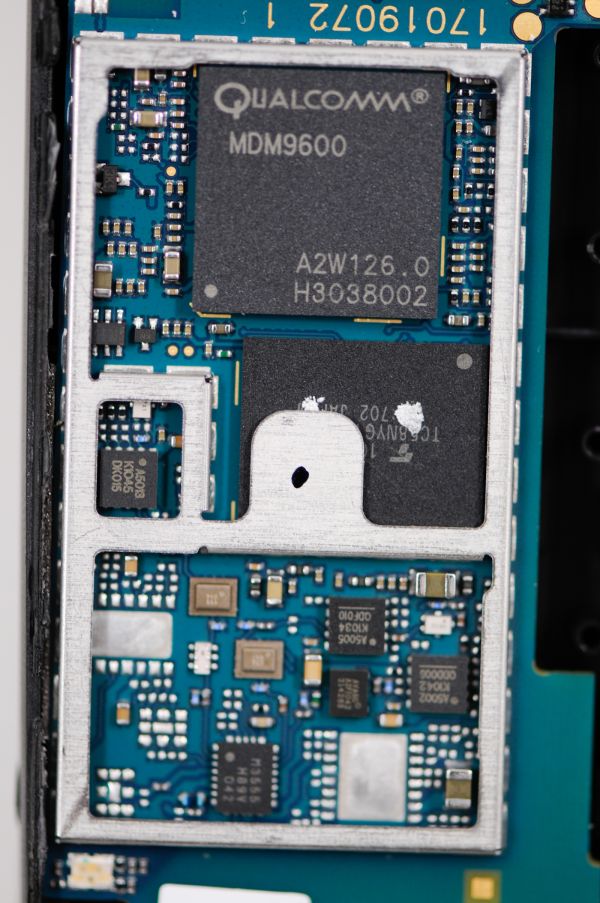
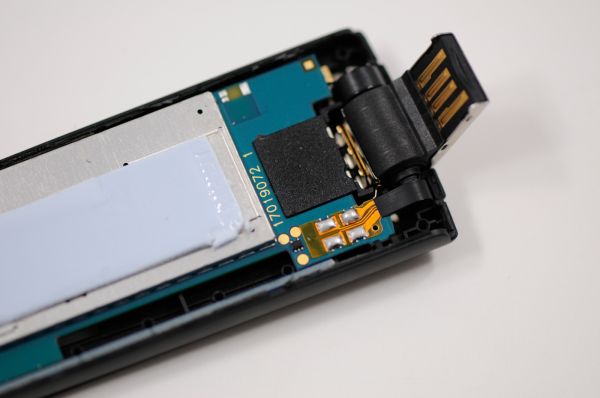














32 Comments
View All Comments
Brian Klug - Thursday, April 28, 2011 - link
I mentioned that with LTE sometimes the handovers pause the data context while the handover happens. It's an occasional 50-500ms pause, sometimes a second. Honestly I noticed it more on the data cards than I did the thunderbolt or the Samsung hotspot.That's another thing which will improve with time.
-Brian
iwod - Wednesday, April 27, 2011 - link
I dont think Bandwidth was much of a concern for mature 3G market. Even 1Mbps is good ( enough ) for web surfing. The problem is latency. And it is very high for 3G network,sometimes up to 1sec.LTE was suppose bring round trip performance down to double digit ms range. But my skip through of this article sees no test on Latency.
Another growing concern for me, is that Data and Mobile Network just dont seems to work. You have a finite amount of total bandwidth, but people consume data far greater then anyone would expect. I think someday we have to deploy national wide Micro WiFi + LTE station to help with bandwidth. Especially in populated city. ( I cant even imagine how would it even work out in place like Hong Kong and China )
Brian Klug - Thursday, April 28, 2011 - link
We tested latency on Page 10 if you're interested. Both latency as measured by speedtest.net (which isn't perfect) and by using pingplotter for almost 12 hours to a number of targets.It's sub 100 ms for a lot of things, and I showed gaming at 50ms to a local CS:S server. It's a definite improvement again thanks to much faster signaling and a shorter frame time.
-Brian
DanNeely - Thursday, April 28, 2011 - link
Unless I'm misunderstanding what the graph is showing, ATT's lower C block ownership is fragmentary with no coverage at all in large parts of the country.http://www.phonescoop.com/articles/article.php?a=1...
DanNeely - Thursday, April 28, 2011 - link
nevermind, I misunderstood what you were saying....bman212121 - Sunday, May 1, 2011 - link
I've seen another report from someone using LTE in New Orleans showing similar numbers. Anything sub 100ms should be fine for an fps. I've definitely seen worse under normal circumstances. FWIW using a D2 and comparing the ping times from the phones terminal to a pc using 3G hotspot, the wireless added 16ms latency.bman212121 - Sunday, May 1, 2011 - link
I have to wonder if they didn't include USB tethering simply because they couldn't sustain the power needed. If you were having issues with a 700ma charger than the maximum 500ma from a computer's usb port could be problematic. It is interesting though that the other devices worked, so I'm guessing that the wifi is what is really eating battery life.tjk818 - Wednesday, July 27, 2011 - link
I have the Pantech UML 290 and a cradlepoint router all updated with the latest firmware (4glte and 3g)works great on 3G now converting to 4g LTE using a ZADACOM feed cut for verizon746-806mhz and a grid antenna( Hyperlink ) . Without the grid I get 1 bar constant sometimes gong to 2 bars with the GRID I get nothing,Does the cable in the Pantech modem need to be connected or disconnected for it work on the grid , I live about 3 miles from the tower . also is there a setting that i can use in the VZAM menu ( under the DIAGVZW menu) that I can set the modem 4g port to activate the external antenna port and deactivate the internal antenna ? I’m using a specan I can see the carriers from the tower at 783mhz.
feed back is welcome
milan03 - Monday, August 22, 2011 - link
Hey Brian: you've mentioned that current Verizon LTE devices are category 3 meaning they can only achieve up to 50mbps with 2x10Mhz. Are you sure that's the breakdown because I'm seeing 50+mbps on a daily basis here in NYC and when downloading sustained well seeded torrent I'm seeing around 6MB/s which makes no sense. I am convinced that Thunderbolt is capable of 73mbps with all the overhead up to about 60mbps. Am I wrong? I dod have poor upload speeds which explains Thunderbolt being 2x1 MIMO not 2x2 like other devices, but is there any other LTE handset that's 2x2 MIMO?Here is what I'm seeing these days: [IMG]http://i51.tinypic.com/dhe1rd.png[/IMG]
oz973 - Tuesday, January 17, 2012 - link
How long does it take for this to charge to 100%? And how can you tell?